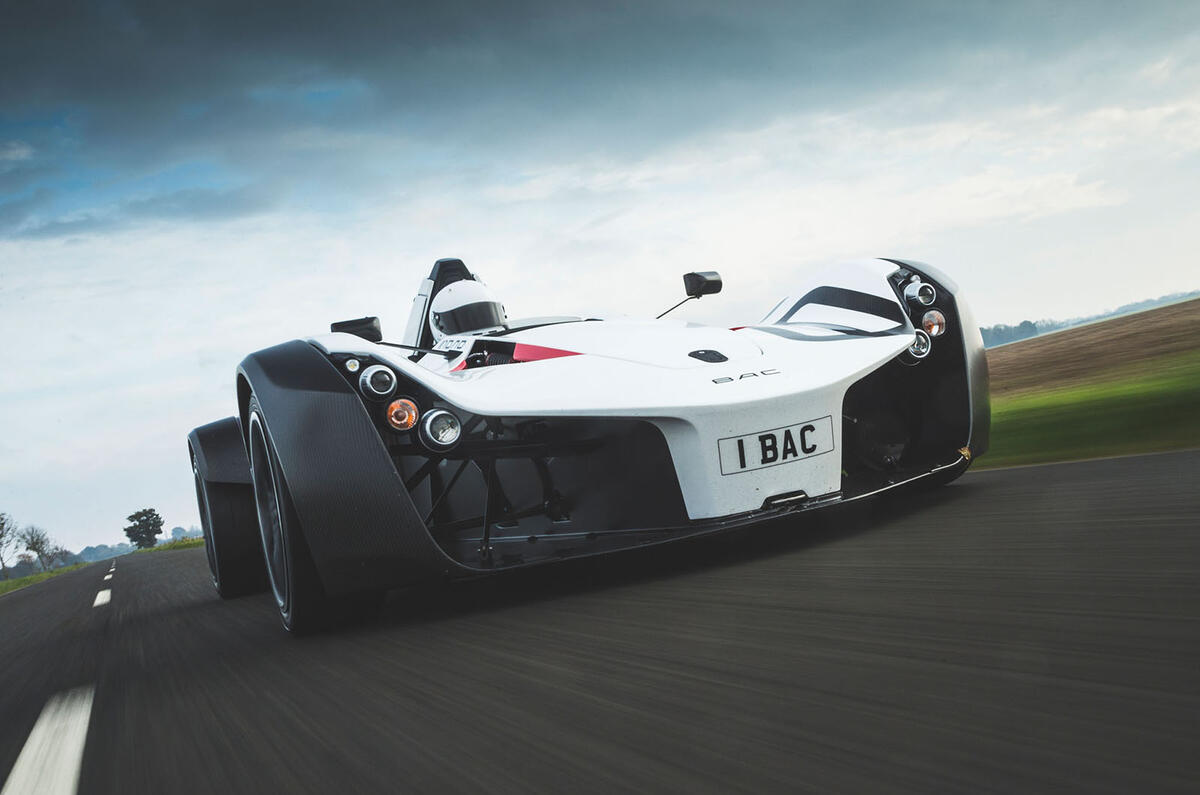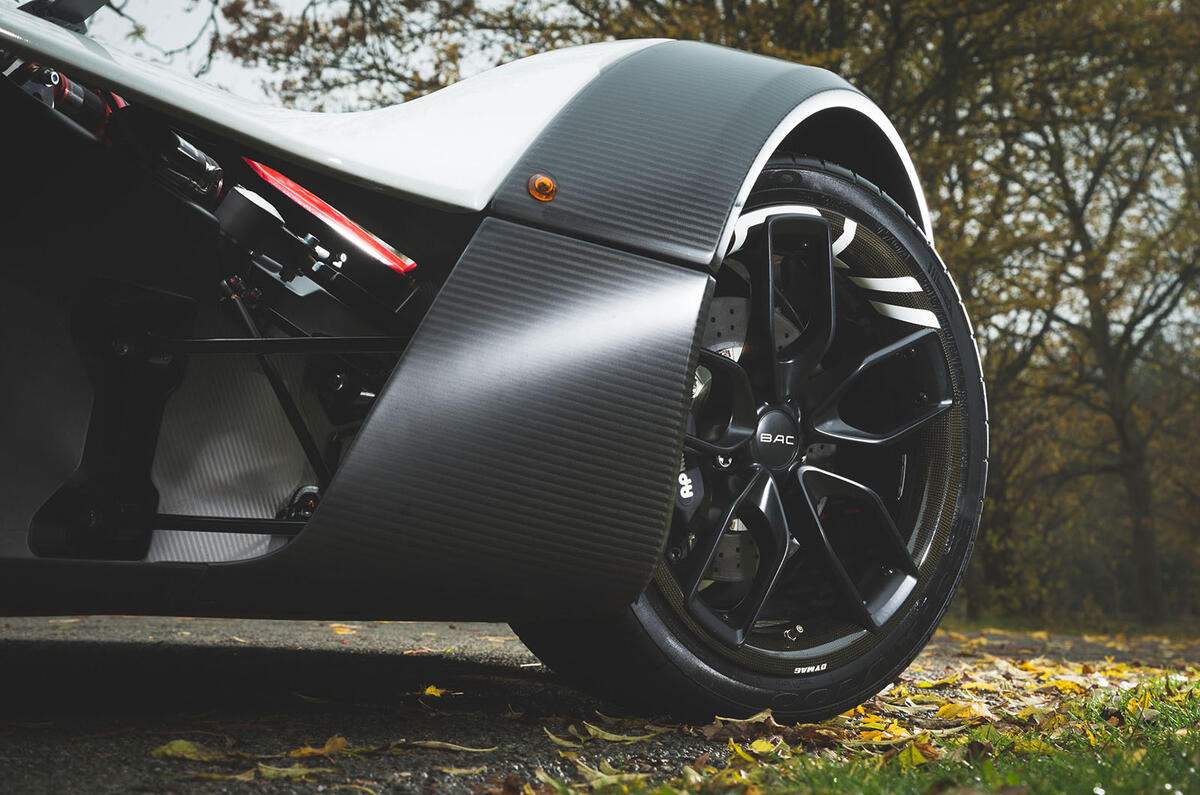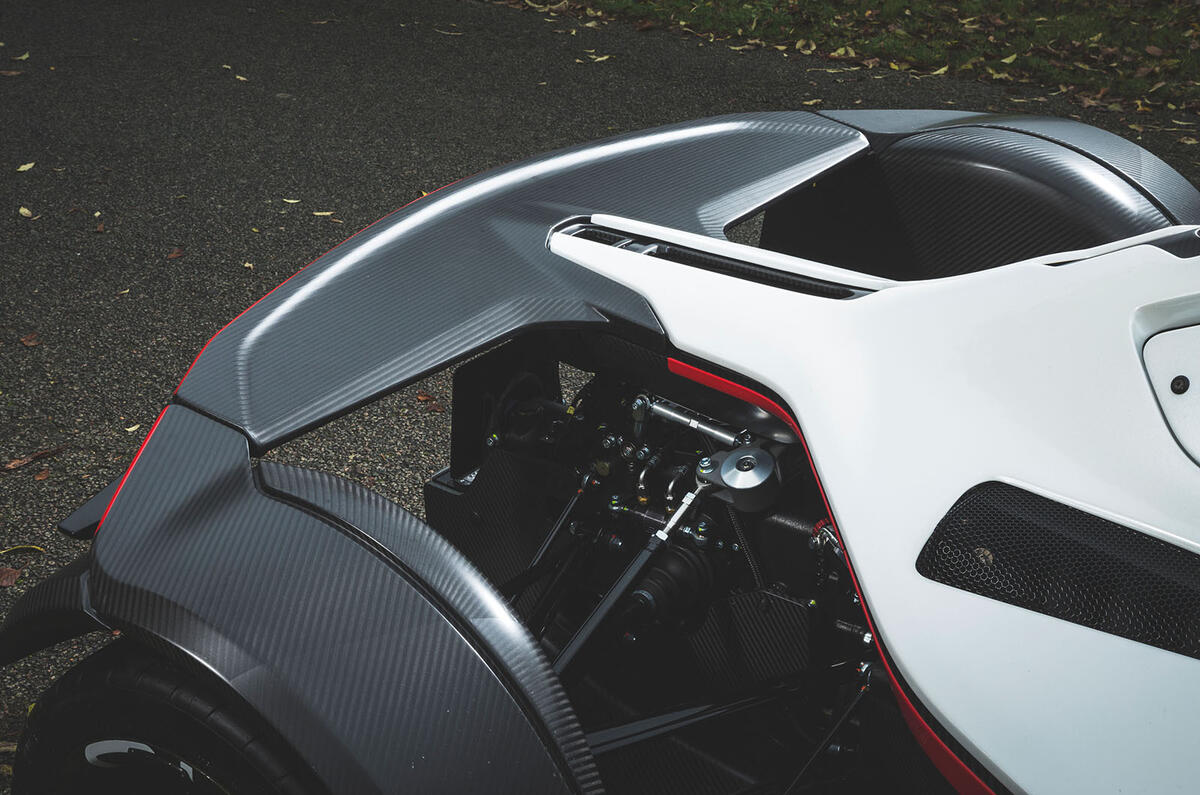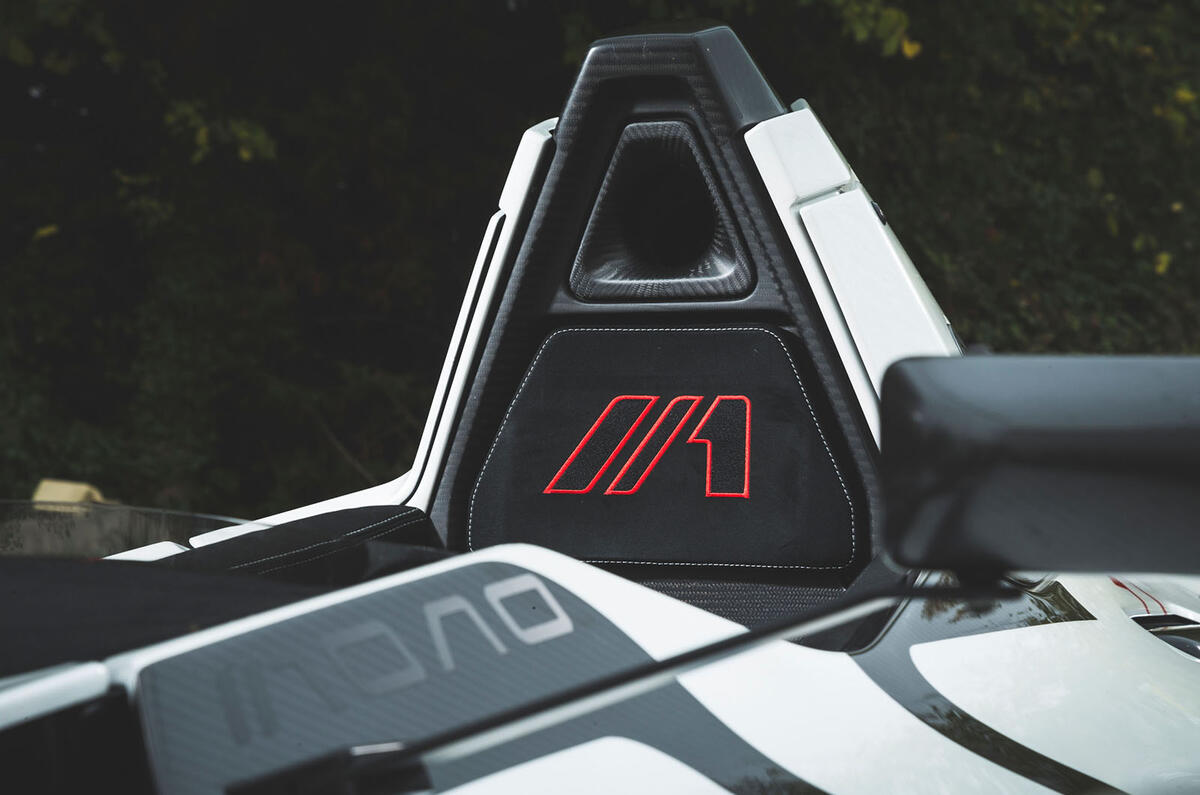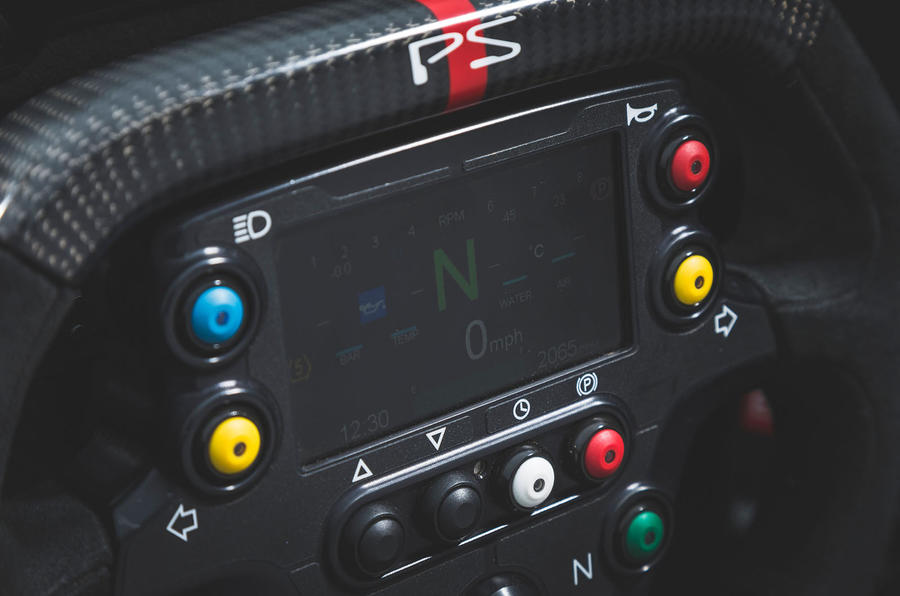Superlatives get wheeled out for the latest supercars, but the rapier-like creation before you offers an experience so indisputably different to the norm it’s difficult to know where to begin.
A coffee might have been nice, but after watching the Mono roll off its transport the caffeine seems unnecessary. This car’s footprint is extremely small – it sits within that of a Fiesta ST, with the steering wheel at knee height – but everywhere you look are the sort of aggressive, intricate details that give it an inflated, combative presence. It’s a skeletonised watch with numerous complications, all designed to help either achieve or deploy a Veyron-matching power-to-weight ratio of 525bhp per tonne.
In the case of the Mono, of which Liverpool-based Briggs Automotive Company now constructs nearly 40 each year despite having started the ball rolling only in 2012, those complications are mouth-watering. First you notice the entirely exposed rear suspension, which like so much about this ‘A-to-A’ offering is pure track-car with a pushrod-activated double-wishbone design and two-way remote-reservoir dampers from Sachs ensconced within race-spec Eibach springs.
At the front the same set-up remains artfully exposed through tightly cropped apertures in the carbonfibre body panels, but then again everything affixed to this carbon-steel spaceframe is impossibly neat. The dazzling Dymag wheels are carbon, too. Or at least the 17in rim is, with an alloy billet centre-section. They save 2.5kg at each corner and were a world first, says BAC. They’re also a £12,000 extra – an ultra-lightweight forged OZ Racing piece is standard. Composite brakes, as fitted to this car, save a further 20kg, and cost another £12,000. This isn’t the last time you’ll raise a pecuniary eyebrow, but what an entrance.


